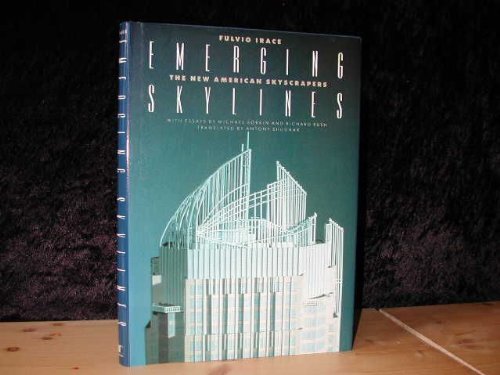irace fulvio shugaar antony (2 résultats)
CommentairesFiltres de recherche
Type d'article
- Tous les types de produits
- Livres (2)
- Magazines & Périodiques (Aucun autre résultat ne correspond à ces critères)
- Bandes dessinées (Aucun autre résultat ne correspond à ces critères)
- Partitions de musique (Aucun autre résultat ne correspond à ces critères)
- Art, Affiches et Gravures (Aucun autre résultat ne correspond à ces critères)
- Photographies (Aucun autre résultat ne correspond à ces critères)
- Cartes (Aucun autre résultat ne correspond à ces critères)
- Manuscrits & Papiers anciens (Aucun autre résultat ne correspond à ces critères)
Reliure
- Toutes
- Couverture rigide (2)
- Couverture souple (Aucun autre résultat ne correspond à ces critères)
Particularités
- Ed. originale (1)
- Signé (Aucun autre résultat ne correspond à ces critères)
- Jaquette (1)
- Avec images (Aucun autre résultat ne correspond à ces critères)
- Sans impressions à la demande (2)
Livraison gratuite
- Livraison gratuite à destination de France (Aucun autre résultat ne correspond à ces critères)
Evaluation du vendeur
-
Emerging Skylines: The New American Skyscrapers : With Essays by Michael Sorkin and Richard Rush
Edité par Whitney Library of Design, 1990
ISBN 10 : 0823013138 ISBN 13 : 9780823013135
Vendeur : Poverty Hill Books, Mt. Prospect, IL, Etats-Unis
Hardcover. Etat : New. HARDCOVER, BRAND NEW COPY, Perfect Shape, No Black Remainder Mark, 411-209Fast Shipping With Online Tracking, International Orders shipped Global Priority Air Mail, All orders handled with care and shipped promptly in secure packaging, we ship Mon-Sat and send shipment confirmation emails. Our customer service is friendly, we answer emails fast, accept returns and work hard to deliver 100% Customer Satisfaction!.
-
Emerging Skylines; The New American Skyscrapers
Edité par Whitney Library of Design [an imprint of Watson-Guptill Publications], New York, 1990
ISBN 10 : 0823013138 ISBN 13 : 9780823013135
Vendeur : Ground Zero Books, Ltd., Silver Spring, MD, Etats-Unis
Edition originale
Hardcover. Etat : Very good. Etat de la jaquette : Very good. First Printing [Stated]. Format is approximately 8.75 inches by 12.25 inches. 192 pages. With essays by Michael Sorkin and Richard Rush. Illustrations (some in color). Bibliography. Index. Among the architects and their projects addressed are: Swanke Hayden Connell; Helmut Jahn; Johnson and Burgee; Cesar Pelli; Booth and Hansen; Hugh Stubbins; Emilio Ambasz; Attia and Perkins; Kohn Pedersen Fox; Hellmuth, Obata & Kassabaum; Edward Larabee Barnes; James Stewart Polshek; Fox and Fowle; Skidmore, Owings & Merrill; Kevin Roche, and I. M Pei. This illustrated (mostly black and white) anthology of four dozen exemplary buildings is set within the context of the author's critical analysis of recent skyscraper construction, itself framed within the history of the genre since its beginnings in the last decades of the 19th century. Fulvio Irace (Salerno, May 12, 1950) is an Italian architect and architecture historian. Since 2000 he has been a full professor of History of Architecture at the Milan Polytechnic. His historical and critical research activity is characterized by numerous studies on Italian architecture of the years between the two world wars and after the war, with monographic works on the leading architects of that phase (for example Giovanni Muzio, Gio Ponti, Carlo Mollino, Franco Albini, Luigi Caccia Dominioni and Vico Magistretti) who have tried to deepen the relationship between international culture and local culture in the development of the idea of modernity in Italian architecture; he also touched on the themes of contemporary design and architectural historiography. A skyscraper is a tall continuously habitable building having multiple floors. Modern sources currently define skyscrapers as being at least 330 ft or 490 ft in height, though there is no universally accepted definition. Skyscrapers are very tall high-rise buildings. Historically, the term first referred to buildings with between 10 and 20 stories when these types of buildings began to be constructed in the 1880s. Skyscrapers may host offices, hotels, residential spaces, and retail spaces. One common feature of skyscrapers is having a steel frame that supports curtain walls. This idea was invented by Viollet le Duc in his discourses on architecture. These curtain walls either bear on the framework below or are suspended from the framework above, rather than resting on load-bearing walls of conventional construction. Some early skyscrapers have a steel frame that enables the construction of load-bearing walls taller than of those made of reinforced concrete. Modern skyscrapers' walls are not load-bearing, and most skyscrapers are characterised by large surface areas of windows made possible by steel frames and curtain walls. However, skyscrapers can have curtain walls that mimic conventional walls with a small surface area of windows. Modern skyscrapers often have a tubular structure, and are designed to act like a hollow cylinder to resist wind, seismic, and other lateral loads. To appear more slender, allow less wind exposure and transmit more daylight to the ground, many skyscrapers have a design with setbacks, which in some cases is also structurally required. As of February 2022, fourteen cities in the world have more than 100 skyscrapers that are 492 ft or taller: Hong Kong with 518 skyscrapers; Shenzhen, China with 343 skyscrapers; New York City, US with 300 skyscrapers; Dubai, UAE with 237 skyscrapers; Mumbai, India with 208 skyscrapers; Shanghai, China with 180 skyscrapers; Tokyo, Japan with 165 skyscrapers; Guangzhou, China with 152 skyscrapers; Kuala Lumpur, Malaysia with 148 skyscrapers; Chongqing, China, and Chicago, US, both with 135 skyscrapers; Wuhan, China with 109 skyscrapers; and Bangkok, Thailand, and Jakarta, Indonesia, both with 108 skyscrapers.


